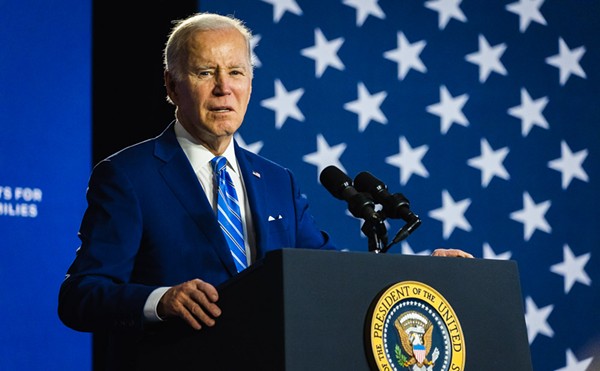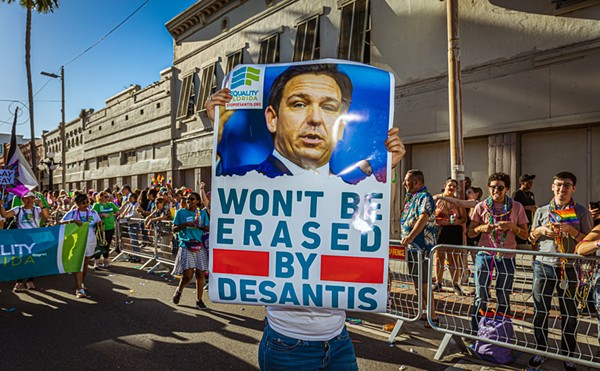A few years ago, the government of Colombia asked the United States to trace nearly 50 MAK-90 rifles it had seized from the National Liberation Army, or ELN. It turned out these rifles had been obtained by Colombian gun traffickers after being purchased at retail stores in the Miami area. The ELN is on the State Department's foreign terror watch list. Yet, like many other underground armies around the world, it buys its weapons in one of the world's freest arms markets. "The United States has for many years been a warehouse, a shopping center, if you will, for firearms," says retired Bureau of Alcohol, Tobacco and Firearms (ATF) resident agent in charge Daniel McBride, "because of the ease of acquisition, not just in the state of Florida but typically throughout the United States. We are a very easy place from which to obtain firearms for transshipment back home." Law enforcement officials describe the United States as a one-stop shop for the guns sought by terrorists, mercenaries and international criminals of all stripes. And Sept. 11 has not changed that in any significant way. In fact, Attorney General John Ashcroft has refused to permit the use of gun purchase records to track crimes, a practice that the FBI had previously used and that conceivably could help to identify terrorists. Nor has Ashcroft proposed closing gun loopholes as part of the USA Patriot Act. The result of the lax U.S. system, says McBride, is "an ongoing cycle" in which weapons bought here end up fueling violence abroad, and in which America is regarded as the firearms "shopping center for the world."
Lobster Air and Gun Land The story of a ragtag South Florida outfit called Lobster Air International illustrates just how easy U.S. gun purchases can be. In the summer of 1998, Stephen Jorgensen began buying the first of what were eventually more than 800 MAK-90 semiautomatic rifles at a store called Gun Land in Kissimmee. He did not have a resale permit — known as a Federal Firearms License or FFL — and he was not required to present one. But Jorgensen wasn't stockpiling the guns for his personal use; he was taking them to Opa-Locka airport near Miami and loading them aboard a light airplane headed for airstrips in Venezuela and Colombia, via Haiti.
Jorgensen's South American clients originally wanted AK-47s, but in the United States, the fully automatic AK-47 can be purchased from a dealer only with a Class 3 permit, which is difficult to obtain. The AK was modified in 1990 to get around the California Assault Weapons Ban — hence MAK-90 or "Modified AK 1990." It is virtually identical to the AK-47 but costs only $200 to $300, compared with $1,000 to $3,000 for a Russian-made AK-47. It is exempt from the national Assault Weapons Ban, enacted after the California ban, because it has slight alterations that give it a hunting-rifle appearance. Jorgensen, a hefty man with an easygoing manner, says the distinction is absurd. "These weapons happened to be a loophole because they didn't have a pistol grip on the stock. They had a thumbhole. How ridiculous!" The MAK-90 can use the same caliber bullet as the AK-47, and it can be converted to fully automatic with rudimentary mechanical skills; a number of websites offer kits and instructions.
The smuggling operation began when a lieutenant colonel of the Venezuelan Air Force asked Rafael Ceruelos if he knew anyone who could buy guns. Ceruelos, of Cuban origin, is a self-described import-export businessman who had already been doing business with the colonel, selling him aircraft parts through connections he had with an aircraft broker from Texas. Ceruelos speaks in a raspy voice, a more sophisticated version of Al Pacino's gruff Tony Montana character from Scarface. He likes to use words like "friggin'" a lot. He says that he just wanted to keep his clients happy.
Ceruelos says the Texan hooked him up with Jorgensen, an old Vietnam War buddy in Tampa who could get weapons at a discount. In 1998, several meetings took place in Dallas, Miami and Caracas to orchestrate a deal, which included setting up Lobster Air to import lobsters to the United States from Haiti. According to Jorgensen, the Venezuelan colonel and the interests he represented put up the money to buy an Aero Commander aircraft. Jorgensen contracted boat operators to circle Haiti and collect lobsters from remote villages, but that part of the plan never went forward. Lobster Air was apparently not in the business of selling lobsters.
On Jan. 3, 1999, U.S. Customs agents, acting on what they thought was a drug tip, stopped the Aero Commander, bound for South America, on a runway at Opa-Locka. But there were no drugs; instead, the plane was loaded with 78 disassembled MAK-90s inside blue gym bags, along with 9,000 rounds of ammunition. Customs and ATF sources now say that Lobster Air's weapons were headed to Colombia's FARC rebels, another group on the State Department's terror list. But McBride, the retired ATF agent, says that "when guns are going into Colombia, there are a number of potential sources they could be going to, including the drug cartels, the various insurgency groups, paramilitary forces over there. ... [It's] very difficult to tell exactly where those guns were going to go, unless you were fortunate enough to get some confiscated and then have the traces run back."














